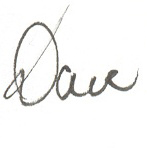City looks to name southeast park after former alderman Sue Higgins
Twenty one years ago, there was a 62-hectare plot of vacant land between Deerfoot and the Bow River just beyond the Southland Drive interchange. It really didn’t have much going for it. There was a narrow strip of cottonwoods, birch and willows along the riverbank, and there were a couple of marshy areas. The land between the riverbank and the Deerfoot and surrounding the marshes was just a big buffer zone of non-native Brome grass – a large field left over from a time when early European settlers in this area ranched and farmed it. To the south was the Lafarge asphalt plant; to the north, the old Cominco fertilizer plant which, in its original incarnation, had been a World War 2 munitions factory. In a way, its two most outstanding features were manmade. A paved bicycle pathway ran through it from the end of Southland Drive, and a pedestrian bridge crossed the river linking the pathway to its counterpart on the east bank, to the community of Riverbend, and to Carburn Park.
The great thing about paved pathways is they make it just as easy to get around in strollers as on bikes. Since our kids were both small at the time and it was an easy hike from our house for the grown-ups, we used to pile them in their strollers and go for walks down there frequently. Frequently enough, in fact, to get well-acquainted with the wildlife in the area: mule deer and the occasional white-tailed deer, coyotes, beavers, frogs, and all kinds of birds in all seasons. In wintertime, because the river there only ever freezes over in the deepest of deep freezes, large numbers of waterfowl – Canada geese, a variety of duck species, gulls for much of the winter – bald eagles, great horned owls, downy woodpeckers, flickers and chickadees. Early spring featured returning robins and red-winged blackbirds. As spring became summer, yellow warblers, cedar waxwings, kingbirds and other flycatchers, Baltimore orioles, swallows, shorebirds, and song sparrows among others. Other people were attracted to the area for other reasons: to let their dogs run off-leash, to fly fish in the river, to go for a run or a bike ride.
For a moment, I need you to think like a child. The pedestrian bridge had a railing on it, and the railing was painted blue. Therefore, Scott, 4, and Jennifer, not quite 3, dubbed it The Blue Bridge. So the cottonwood forest along the riverbank on either side of the bridge became The Blue Bridge Forest.
One sunny winter afternoon very early in 1992, we got back home from one of these walks to find a notice in our mailbox from the Willowridge Community Association. Martha asked, “What is it?”, and I read it aloud – a notice of a town hall meeting later that week to hear a developer’s plans to bulldoze the whole area and turn it into a par 3 golf course.
Our son Scott listened to me read it and pleaded, “Daddy, don’t let them wreck The Blue Bridge Forest.”
So began my first foray into political action – provided you don’t count taking part in the obligatory student tuition fee hike protest in first year of university.
We put together a citizens group, I joined the board of the community association, I finagled an appointment as the community representative onto the Calgary River Valleys Urban Parks Master Plan, we dropped leaflets, we posted notices and manifestos and entreaties to dog owners to pick up their mutts’ poop and keep the area clean. Within Willow Park and Maple Ridge – the Willowridge Community – we mustered public opposition to the golf course and built massive public support for a natural park instead. And we networked our butts off, reaching into communities across the south side of Calgary and building support for our cause. We got our supporters to phone and write their aldermen, we lobbied every member of City Council in person, and when we marched well over 200 seriously concerned, middle-class, taxpaying voters – incongruously, wearing armbands, but that earlier tuition protest had to have been good for something! – into the visitors’ gallery at Council Chambers later that year, we knew we had the votes to defeat the golf course proposal. About eighteen months later, we were back at council to win rezoning of that patch of vacant land as a natural park to be known as Southland Park.
It’s often been described as the city’s most popular dog park, and it is a large and very well-used off-leash area. But over the last twenty years, Southland Park has slowly, steadily been rehabilitated to a natural state. A fence separates the off-leash area, which occupies a part of the field of non-native grass to which I referred earlier, from the rehabilitated natural area which teems with nature – as a natural area should.
It is good.
One cannot put together a political action strategy or Campaign-to-Fight-City-Hall like we did without coming into direct contact with the ward alderman. In our case, that was Sue Higgins. At the start, City Hall thought the golf course was a fine idea, and nobody thought it was a finer idea than Sue Higgins.
At the start, she fought us tooth-and-nail, but as time went by, she realized that the people were on our side. I will never forget the moment she told me that she was coming over to our side and getting behind the park. She said, “It doesn’t matter what I want. It’s what the constituents want.”
Sue Higgins and I worked rather closely together on the making of Southland Park over the next two years – which is to say, through her actions she taught me how you do politics with integrity. She represented southeast Calgary on Council for 21 years, and she represented us well.
I see in the Sun that next Tuesday, a Council committee will be asked to change the name of Southland Park to Sue Higgins Park. So it should be. Thank you, Sue. It is good.






Leave a Reply